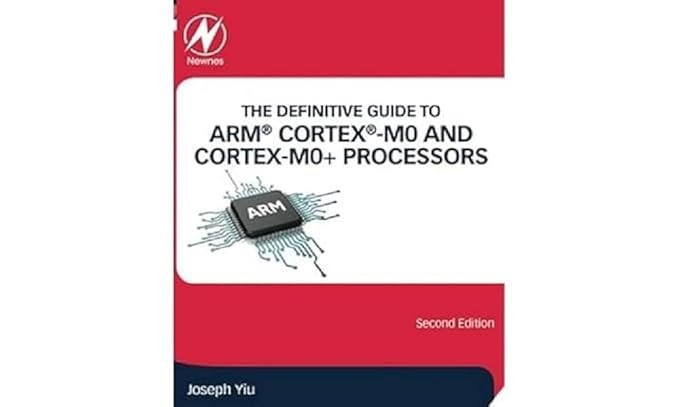The Definitive Guide to ARM® Cortex®-M0 and Cortex-M0+ Processors: A Comprehensive Overview
Introduction
The ARM Cortex-M0 and Cortex-M0+ processors have become ubiquitous in embedded systems due to their low power consumption, high performance, and cost-effectiveness. This white paper delves into the key features, architecture, and programming techniques of these processors, providing a comprehensive guide for developers.
Key Features of Cortex-M0 and Cortex-M0+
- Low Power Consumption: Optimized for battery-powered devices, offering various power-saving modes.
- High Performance: Efficient instruction set architecture and low-latency pipeline.
- Simple Peripherals: Integrated peripherals like timers, UARTs, and ADCs for basic system functionality.
- Memory Protection Unit (MPU): Provides memory protection for code and data integrity.
- Nested Vectored Interrupt Controller (NVIC): Efficient interrupt handling and prioritization.
Core Architecture
- Processor Core:
- 32-bit RISC architecture.
- Pipelined execution for improved performance.
- Low power consumption through various power modes.
- Memory System:
- Small on-chip memory for code and data.
- Support for external memory interfaces (SRAM, SDRAM, NOR flash).
- Peripheral Subsystem:
- Integrated peripherals for basic system functionality.
- Flexible configuration and control.
Programming the Cortex-M0 and Cortex-M0+
- Toolchain:
- ARM Compiler Toolchain (armcc) for C/C++ compilation.
- GNU Compiler Collection (GCC) for cross-compilation.
- Debugger (e.g., ARM RealView Debugger) for debugging and profiling.
- Memory Map:
- Understanding the memory map and memory organization.
- Allocating memory for code, data, and peripherals.
- Interrupt Handling:
- Configuring the NVIC to handle interrupts.
- Writing interrupt service routines (ISRs).
- Peripheral Programming:
- Configuring and controlling peripherals through register accesses.
- Using device drivers to simplify peripheral access.
Real-World Applications
- IoT Devices:
- Low-power sensors, actuators, and wireless communication modules.
- Medical Devices:
- Implantable devices, wearable health monitors, and medical equipment.
- Automotive Systems:
- Engine control units, airbag systems, and body control modules.
- Consumer Electronics:
- Remote controls, smart home devices, and wearable fitness trackers.
Advanced Topics
- Power Management:
- Understanding power modes and optimizing power consumption.
- Implementing low-power techniques like dynamic voltage and frequency scaling.
- Real-Time Systems:
- Designing real-time systems with precise timing requirements.
- Using RTOS or bare-metal programming techniques.
- Security:
- Implementing security measures like secure boot, code signing, and encryption.
- Protecting against hardware and software attacks.
References
- ARM Cortex-M0 and Cortex-M0+ Technical Reference Manual
- ARM Compiler Reference Guide
- GNU Compiler Collection User Manual
- The Definitive Guide to ARM® Cortex®-M3 and Cortex-M4 Processors by Joseph Yiu
Conclusion
The ARM Cortex-M0 and Cortex-M0+ processors are powerful and versatile devices that are well-suited for a wide range of embedded applications. By understanding their architecture, programming techniques, and real-world applications, developers can create efficient, reliable, and low-power embedded systems. Contact ias-research.com



